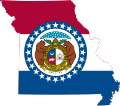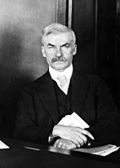| |||||||||||||||||||||||||||||
1,098 delegates to the 1928 Democratic National Convention 732 (two-thirds) votes needed to win | |||||||||||||||||||||||||||||
|---|---|---|---|---|---|---|---|---|---|---|---|---|---|---|---|---|---|---|---|---|---|---|---|---|---|---|---|---|---|
| |||||||||||||||||||||||||||||
 First place by convention roll call Smith Hull George Various | |||||||||||||||||||||||||||||
| |||||||||||||||||||||||||||||
From March 6 to May 18, 1928, voters of the Democratic Party elected delegates to the 1928 Democratic National Convention, for the purpose of choosing the party's nominee for president in the 1928 election. [1]
Contents
In sharp contrast to the three previous open nominations, the delegate selections were all-but-conclusive in favor of New York governor Al Smith, who entered the convention only a few votes short of the required two-thirds majority; he won on the first ballot after several delegates shifted to him. Smith was the first Catholic nominated by a major party for President of the United States and the first non-incumbent Democrat to win his party's nomination on the first ballot since 1908.
Despite his easy nomination, his failure to carry most Southern states was a sign of things to come; Smith lost the general election to Herbert Hoover in a landslide, with many Southern voters defecting to the Republican Party over their opposition to Smith's Catholic faith.








